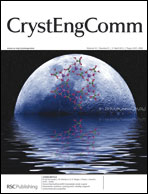Enzyme-conjugated ZnO nanocrystals for collisional quenching-based glucose sensing†
Abstract
A simple approach to sensitive glucose detection has been developed based upon variation in the fluorescence of ZnO nanocrystals with glucose concentration. ZnO nanocrystals were successfully synthesized in wurtzite structure using a surfactant, mercaptoundecanoic acid (MUA) via the polyol method. MUA molecules not only served as a template for the synthesis of spherical-shape nanoparticles but also provided water solubility and biocompatibility due to its carboxyl group. Carboxyl-terminated ZnO nanocrystals were activated by esterification of n-hydroxysulfosuccinimide (Sulfo-NHS) catalyzed by water-soluble 1-ethyl-3-(3-dimethylaminopropyl) carbodiimide (EDC). Glucose oxidase (GOx), an enzyme could be immobilized to ZnO nanocrystals by replacing NHS with amino-acid groups of GOx. ZnO-MUA-GOx bioconjugates showed a decrease in the photoluminescence (PL) intensity by appearance of glucose molecules due to the collisional quenching by hydrogen peroxide generated from enzymatic oxidation reaction of glucose. PL intensity showed a linear decrease with glucose concentration from 1.6 to 33.3 mM, which fully covers the physiological glucose level. ZnO-MUA-GOx bioconjugates showed a detection limit lower than 0.33 mM and a response time less than 5 s. They also revealed distinct specificity against cholesterol molecules.


 Please wait while we load your content...
Please wait while we load your content...